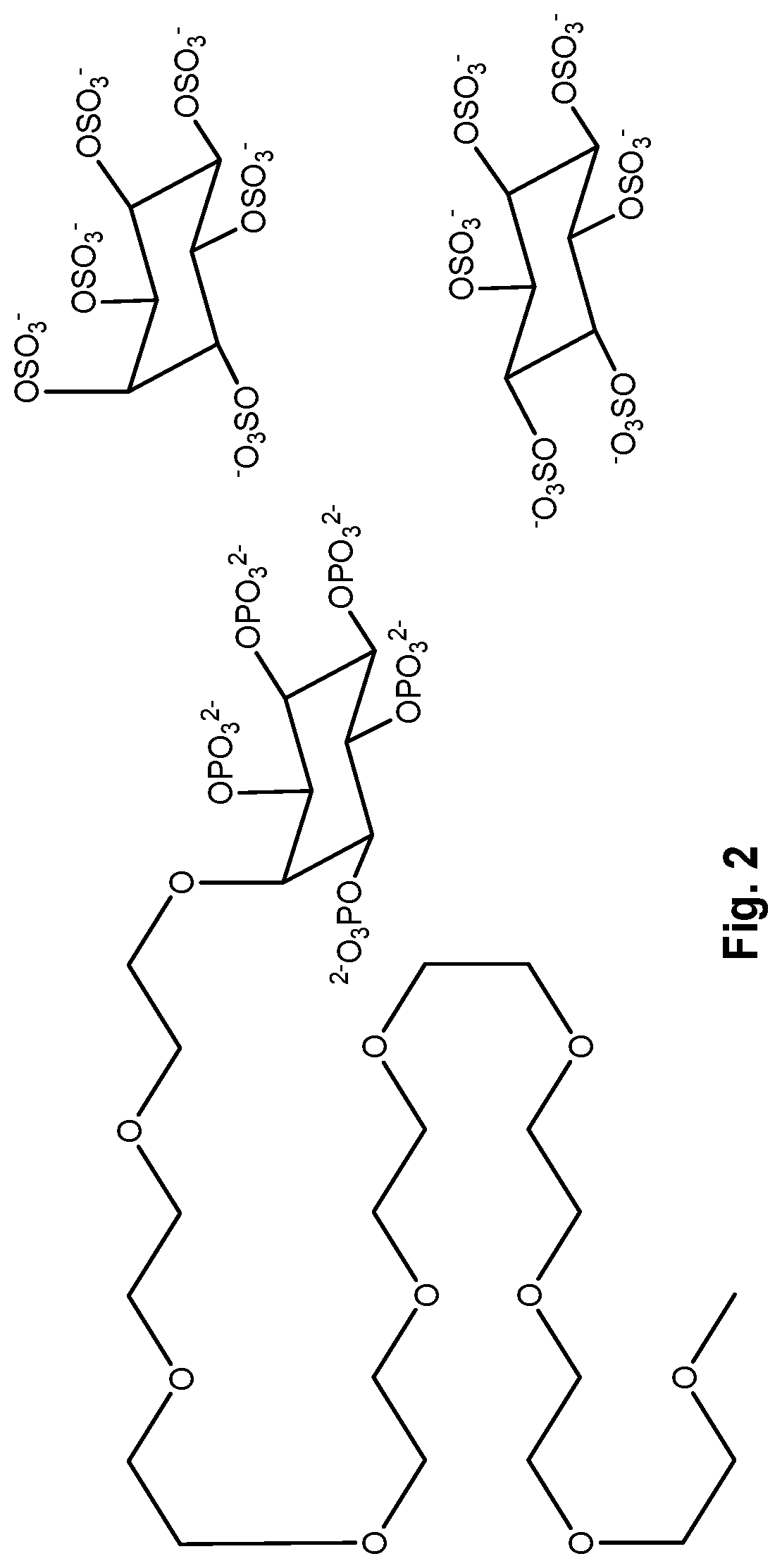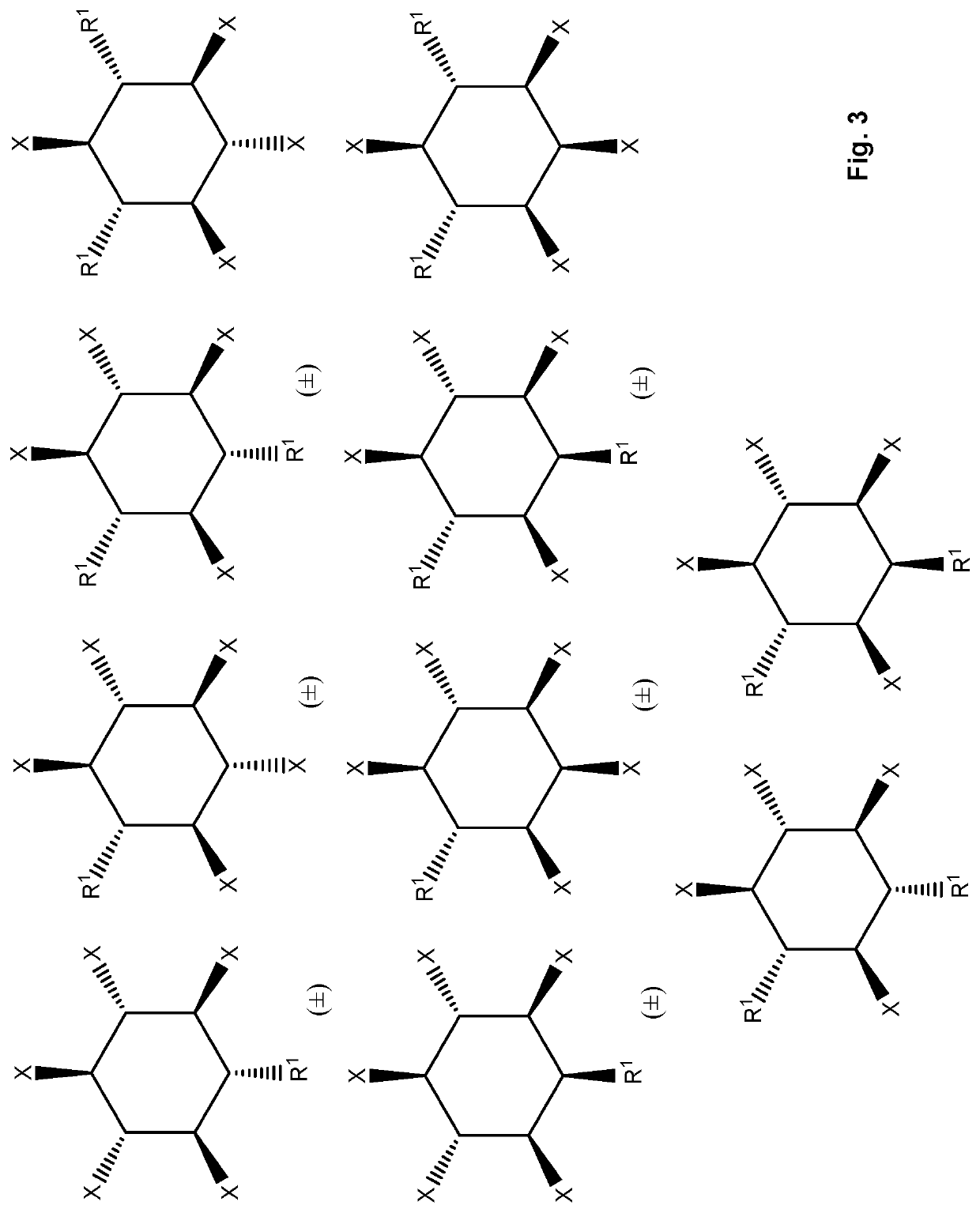Inositol phosphate compounds for use in increasing tissular perfusion
a technology of inositol phosphate and compounds, which is applied in the direction of group 5/15 element organic compounds, drug compositions, cardiovascular disorders, etc., can solve the problems of increased risk of tissue death (gangrene), amputation and premature death, and increased risk of pad, so as to improve the safety profile and increase the perfusion of tissular cells. , the effect of oxygenation
- Summary
- Abstract
- Description
- Claims
- Application Information
AI Technical Summary
Benefits of technology
Problems solved by technology
Method used
Image
Examples
example 1
Prevention of Limb Ischemia
Impact in Blood Perfusion
[0228]The preventive effects of SNF472, IP4-4,6-bisPEG100 sodium salt and cilostazol on blood perfusion were tested using a rat model for a duration of 12 days. Limb ischemia in the subjects was induced from D1 excepting the sham group, to which no ischemia was induced. Subjects induced with ischemia were then treated with placebo and active agent formulations from D1 to D12 to assess their impact in preventing limb ischemia. Observations were taken at several points during treatment from D1 to D12. All subjects were weighed every day before treatment.
[0229]1. Induction of Limb Ischemia
[0230]Fifty-four male Sprague Dawley (SD) rats (Envigo Corp., Huntingdon, GB) weighing approximately 250-275 g were used. The subjects were fed with an A04 diet (Scientific Animal Food & Engineering; Carpe Bio, Amersfoort, NL). The subjects were divided in 5 groups, 8 to 10 rats per group, as follows:
[0231]Group 1—Control (sham)
[0232]Group 2a Placebo...
example 2
Prevention of Limb Ischemia
Impact on Maximal Walking (MWT) and Distance (MD T) Times
[0257]The preventive effects of SNF472 and cilostazol on blood perfusion, walking ability and tissue calcification were tested using a rat model for a duration of 24 days. Additionally, the effects of a combined treatment of SNF472 and cilostazol on blood perfusion were also tested. Limb ischemia in the subjects was induced from D1 to D3 excepting the sham group, to which no ischemia was induced. Subjects induced with ischemia were then treated with placebo and active agent formulations from D1 to D12 to assess their impact in preventing (a) limb ischemia and tissue calcification and (b) the deterioration in walking ability. Treatment in all subjects was discontinued from D13 to D24. Observations were taken at several points during the treatment and post-treatment phases from D1 to D24. All subjects were weighed every day before treatment.
[0258]1. Induction of Limb Ischemia
[0259]Fifty-four male Sprag...
example 3
Treatment of Limb Ischemia
[0287]The effects of SNF472 and cilostazol over blood perfusion, walking ability and tissue calcification after the inception of limb ischemia were tested using a rat model for a duration of 13 days. Limb ischemia was induced to all groups from D1 to D3 excepting the sham group, to which no ischemia was induced. Subjects induced with ischemia were administered placebo and active agent formulations from D5 on to allow for the development of ischemia before starting treatment. From D5 to D13, subjects were treated from for assessing the impact of treatment on limb ischemia, walking ability and tissue calcification. Observations were taken at several points during the treatment from D1 to D13. All subjects were weighed every day before treatment.
[0288]1. Induction of Limb Ischemia
[0289]Sixty-six male Sprague Dawley (SD) rats (Envigo Corp., Huntingdon, GB) weighing approximately 250-275 g were used. The subjects were fed with an A04 diet (Scientific Animal Food...
PUM
| Property | Measurement | Unit |
|---|---|---|
| Walking Time | aaaaa | aaaaa |
| pH | aaaaa | aaaaa |
| pH | aaaaa | aaaaa |
Abstract
Description
Claims
Application Information
 Login to view more
Login to view more - R&D Engineer
- R&D Manager
- IP Professional
- Industry Leading Data Capabilities
- Powerful AI technology
- Patent DNA Extraction
Browse by: Latest US Patents, China's latest patents, Technical Efficacy Thesaurus, Application Domain, Technology Topic.
© 2024 PatSnap. All rights reserved.Legal|Privacy policy|Modern Slavery Act Transparency Statement|Sitemap



